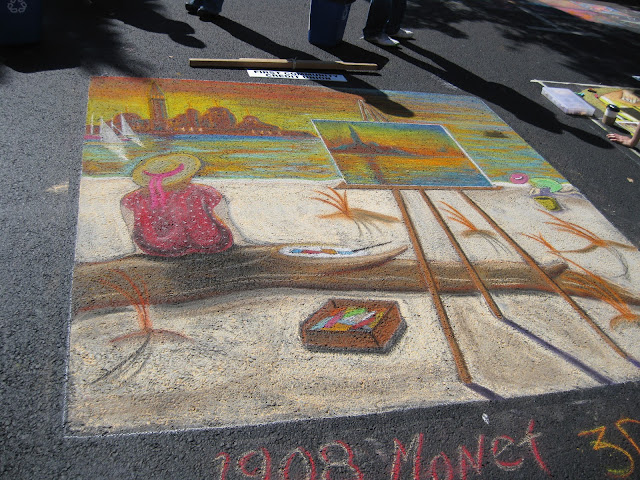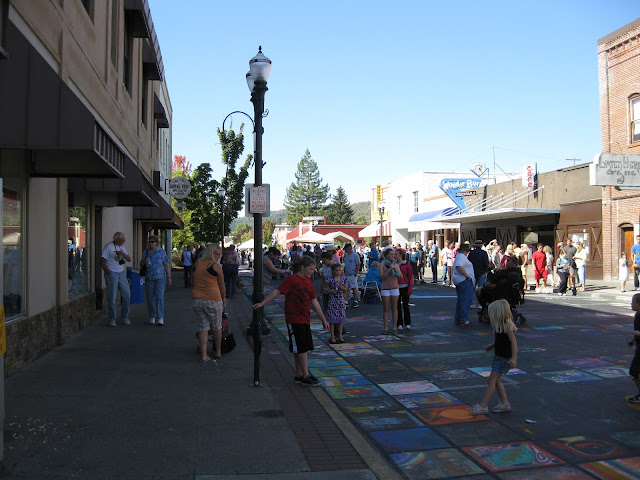The following story is courtesy of Finn J.D. John - Offbeat Oregon
Is legendary Blue Bucket Mine still out there in Oregon mountains?
A group of kids from a lost wagon train found
some strange yellow rocks in 1845, three years before the Gold Rush hit.
Miners have been looking for the kids' play spot ever since.
By Finn J.D. John — April 19, 2009
Somewhere in the mountains of northeast Oregon, a huge deposit
of gold is still sitting quietly, waiting to be discovered — or so they
say.
It’s known as the “Lost Blue Bucket Mine.”
Here’s the story:
Lost and hungry in the Blue Mountains
In 1845, Stephen Meek, the brother of Oregon legend Joe
Meek, convinced a bunch of Oregon Trail pioneers in Idaho that he could
guide them across the Cascades without going through the dangerous
rapids on the Columbia — that he could show them a “cut-off” that would
take them straight across the beltline of Oregon to the Willamette
Valley. They set out in high spirits, but after a month or two wandering
across the High Desert they realized Meek had no idea where he was
going or what he was doing. He escaped before they could lynch him, but
by then, of course, they were committed and had to work their way
through as best they could.
A group of them was camped by a stream or river one night,
trying to find its way and trying not to starve. Meanwhile, some of
the kids were playing by the river. It was autumn, so stream flows
would have been low. One of the kids found an interesting yellow pebble,
strangely heavy.
Funny yellow pebbles
They discovered that the river was full of these yellow
pebbles — they could be removed from the riverbed with a shovel, they
were so deep and plentiful. The kids filled up a blue bucket with them
and brought them back to camp, where the adults puzzled over what they
might be. The party’s blacksmith put one on a metal wagon tire and
pounded on it; it flattened easily.
Well, of course, you know what it was. And you might think
they should have known, too. But you have to remember, this was in
1845. Until 1849, virtually nobody knew the West had any gold in it at
all. The idea that they were looking at a fortune in precious metal
never crossed their minds.
But they did find that the strange rocks made great
sinkers for fishing — the current in the river was too fast for their
lines without a sinker. That night everyone in the party had a big fish
dinner — the best food they’d had for a long time.
Then they moved on. “No,” the grown-ups told the kids,
“you may not bring a bunch of rocks with you. The poor starving oxen
have too much weight to pull as it is.”
So the “rocks” stayed behind.
Then gold was discovered
Well, as you can imagine, four years later when gold was
discovered in California, those emigrants — now farming land claims in
the Willamette Valley — realized what they’d found. But they had no
idea where it was.
No one has ever re-discovered that spot. Many have tried —
in fact, prospectors looking for it found dozens of other lucrative
mines in the Blue Mountains — but the Blue Bucket Mine remains
undiscovered to this day.
The Auburn swindle
As a side note, one man actually made his fortune
pretending he knew where it was.This fellow’s name was J.L. Adams. He
started bragging around Portland in 1861 that he’d found the mine and
needed some folks to help him work it. Quickly he put together a party
of 58 men and off they went. Problem was, it quickly became obvious
that he wasn’t leading them anywhere in particular. Finally, faced with
a hangman’s noose, he confessed: He’d wanted to prospect in the Blue
Mountains with a large enough party to fend off any hostile Native
Americans, and had made up the whole story as a recruiting scheme.
The volunteers decided not to kill him. Instead, they took
everything but his clothes and kicked him out of camp and started for
home.
On the way, they hit gold. Lots of it. Not the Blue Bucket
Mine, but a big enough strike for everyone to stake a lucrative claim –
even Adams, who had been following the party scavenging food from camp
leftovers.
The strike became a town, and the town became Auburn.
The town of Blue Bucket has yet to be platted. Is it still
out there, somewhere in the mountains of northeast Oregon, waiting for
a weekend adventurer, elk hunter or fly fisherman to stumble upon?
Have subsequent floodwaters covered all the yellow pebbles with silt
yards deep? Or did some crazy lonely prospector find it, mine it
secretly and disappear?
We’ll probably never know.
How much truth is in this story?
There are good reasons to be skeptical of this frontier Oregon
legend; there are aspects of the Blue Bucket story that make it clear
it's been at the very least augmented over the years.
First, if the nuggets made such great fishing sinkers, and the
settlers were so hungry, would they not have brought a few as fishing
tackle?
Secondly, why are there no names associated with this story?
Sure, the people involved could have tried to keep quiet about it,
hoping to go back and cash in; but there were two or three years in
which they supposedly had no idea what they'd found, and their unusually
difficult Oregon Trail experience would have been a frequent topic of
conversation during that time. How is it that we don't know who they
were?
Third, in an era in which people sometimes had to bite coins to
make sure they weren't fakes, how likely is it that a blacksmith would
not recognize the nuggets as gold, even after learning how soft they
were by beating one on the wagon tire?
Then, too, the idea that none of the children of the wagon train
would have snuck a rock or two into a pocket seems pretty unlikely.
There's probably something real in this story somewhere; a legend
like this seldom springs from nothing. Still, though, it's been 170
years. Who knows what the real story is?
The one thing we do know is that generations of Oregonians have
shared and appreciated and wondered about this story around campfires
and over dinner tables throughout the years. And we know, too, that
people looking for it have made history — and would not have done so had
it not been for this bit of frontier folklore.
As a historical account, it's pretty sketchy. But as a piece of
oral folklore, this story's place in state history is assured and well
deserved.
(Sources: Friedman, Ralph.
Tales Out of Oregon. Sausalito, CA: Pars Publishing, 1967; Sullivan, William L.
Hiking Oregon’s History. Eugene: Navillus, 2006)





















































